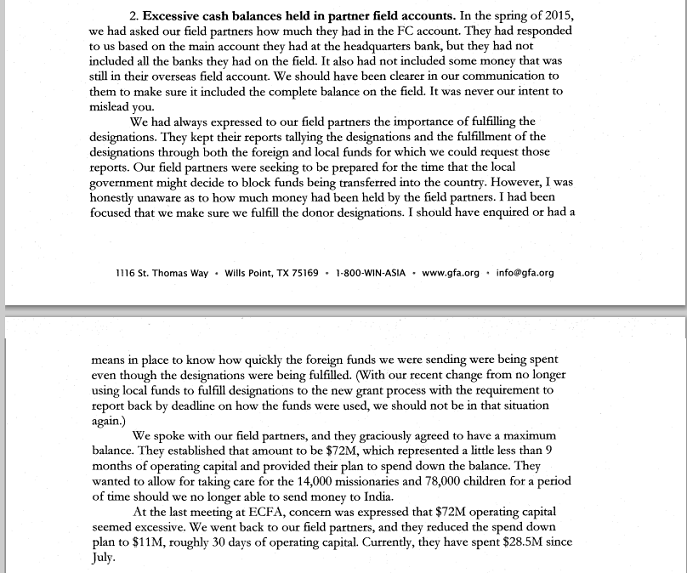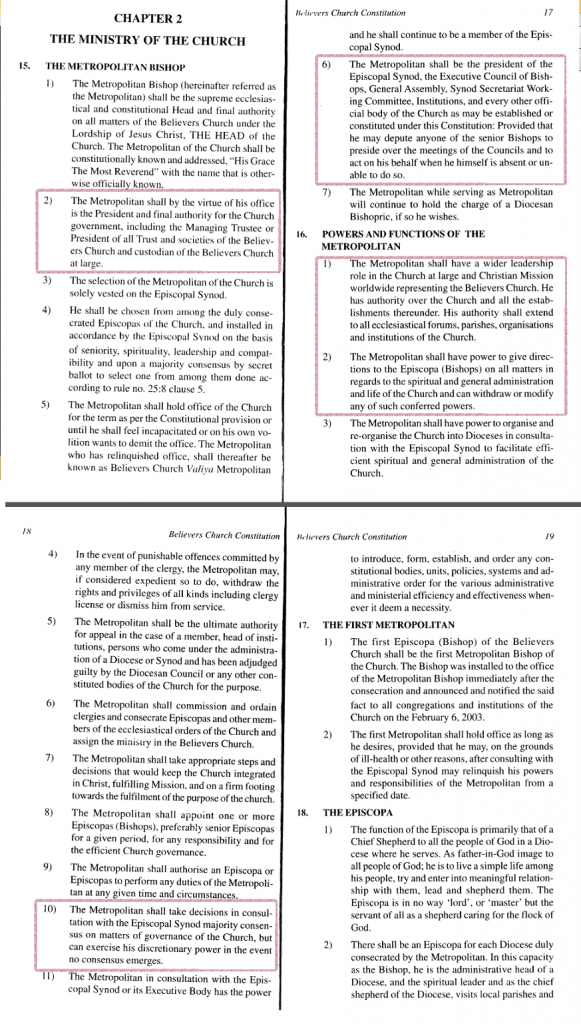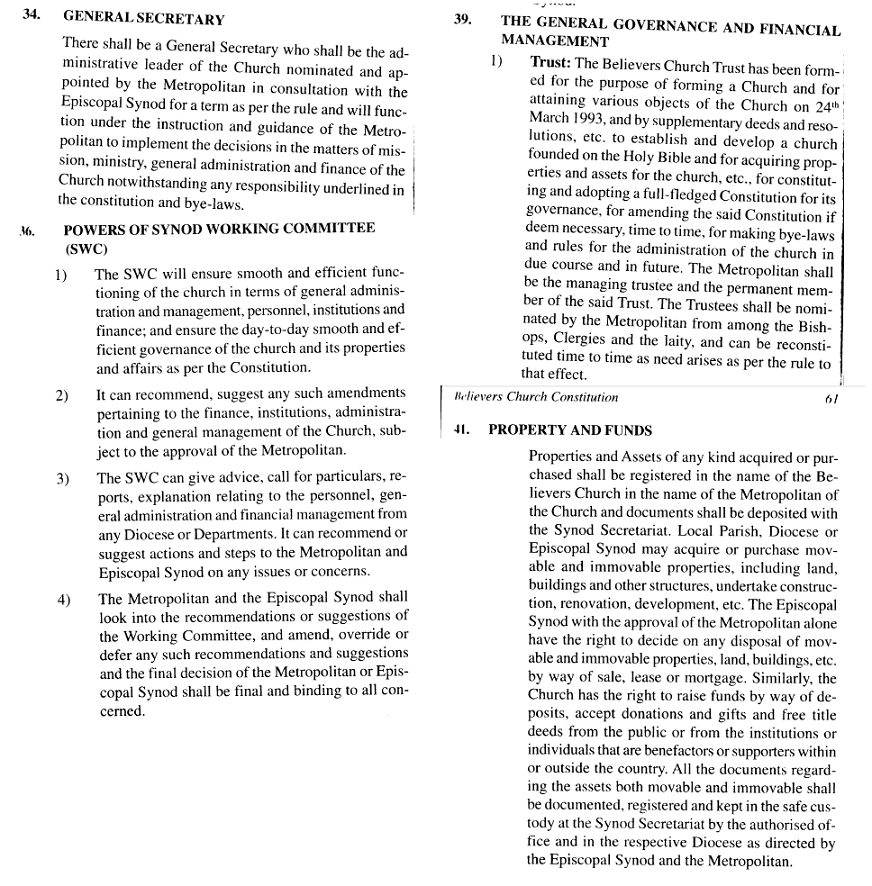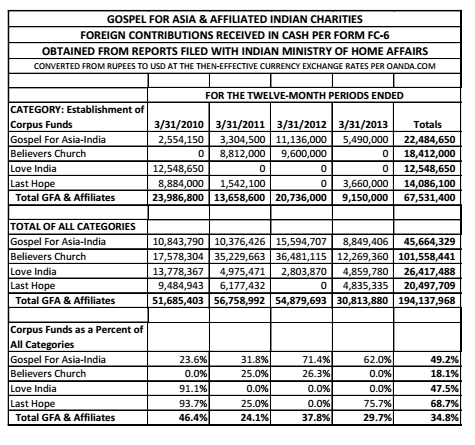In today’s World magazine article on Gospel for Asia, COO David Carroll made the following claims about program spending.
Carroll offered statistics, including that GFA’s field partners in India and elsewhere in southern Asia support some 14,000 national missionaries at a cost of approximately $30 million a year. He added that the ministry provides for 78,000 children through GFA’s “Bridge of Hope” program, which requires another $33 million a year, and constructs some 1,200 new churches a year at a cost of another $15 million annually.
Bridge of Hope
I want to focus on the Bridge of Hope claim. Carroll’s claim is consistent with what Gospel for Asia asks donors to give in order to sponsor a child ($35/month). However, in the past, GFA founder and CEO K.P. Yohannan has claimed it takes much less per child. In 2010, according to a New India Express article which cited Yohannan, the program required 30 crore (at the time equal to about $6.5 million USD) to provide for 60,000 children.
At present the Church spends Rs 30 crore annually for the education and uplift of 60,000 children through 525 centres. The Bridge of Hope project of the Believers Church provides free education, health care, nutritious food and school supplies for underprivileged children, irrespective of caste or creed.
This works out to $9/child/month. At the time, GFA was asking for $28/child/month in order to sponsor a child.
Then again in a 2012 interview on Surya television, Yohannan said it cost almost 40 crore (about $7.1 million USD) to care for 60,000 children. Yohannan said:
As for Believers’ Church and Cheruvally estate, donors specifically (1:18) have instructed us to establish an income producing entity (1:23), in the future for you to continue your work. Let me ask you, we spend almost 40 crore rupees to take care of 60,000 children – where does this money come from? Can we campaign to raise money all the time? We have to produce our income (1:43), that is what this is for, for that only.
Using the estimated exchange rates in 2012, as described by GFA and Believers’ Church leader Yohannan, the per month per child spending works out to just under $10/month. In June 2012, GFA was asking $35/month in order to support a child, the same as the current cost to a donor.
According to the public reports of spending in India (FC-6 forms), GFA spent $6.2 million USD on the “welfare of children” in the Indian fiscal year ending March 31, 2014. That works out to about 105/child/year or just under $9/child/month.
I have seen two budgets for Bridge of Hope centers in India, each for a different region of the country. I wrote about one budget earlier this year:
I have also seen GFA budget documents which tell a more surprising story.* The actual cost during fiscal year ending 2014 to support one child in a GFA Bridge of Hope center in India was just under INR 500 or around $8.20 per month per child. This paid for the administration of the program, food purchases, and all child services. In fact, the actual items given to each child (school supplies, clothes, hygiene supplies and gifts) only cost INR 140 per child or $2.20 per month.
In another region of the country, the per child expense was even less — 300 rupees per child per month, or just under $5 USD/child/month. In some areas of the country, children attend free public education and so the costs are less.

Even though this is dramatically less than what David Carroll told World magazine, it is closer to what K.P. Yohannan told Indian media.
A review of receipts for 2012 reveals that donors don’t contribute anywhere close to $33 million for Bridge of Hope related expenses.
Given GFA’s track record regarding public claims, it is reasonable to question what David Carroll told World. What would help is if GFA released some evidence for their claims. Show us the budgets, audited statements, etc. The ECFA said in the investigation report that many of GFA’s intial disclosures were not accurate and that they had to get necessary information from other sources, when the information should have come from GFA.
One analysis by former auditor Jason Watkins found that only 12% of funds given for Bridge of Hope was used for the program. With the discrepancies between what David Carroll and K.P. Yohannan told different public audiences, it is important for GFA to provide evidence and an explanation. With the budget figures and public reports in India, it even more important for donors to get answers about where those funds are going.




